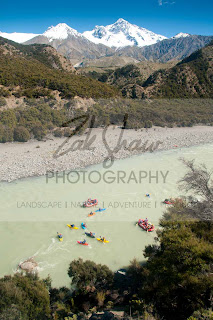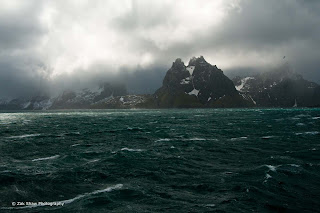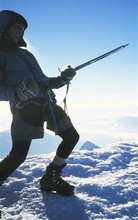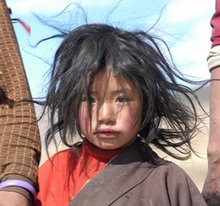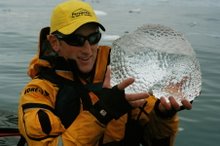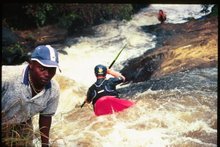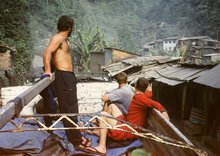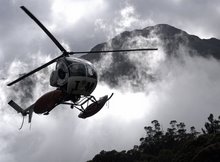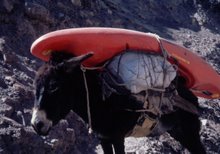"If you start running some class IV drops in a rapidly descending river bed you've gone to far and are starting into the Toaroha Canyon. Continue to ensure certain celebrity status, but beware it will most likely be posthumously" NZ Whitewater guide 1999.
A skull and crossbones have hung over the Toaroha river map for over a decade. History has seen the best kayakers in the world visit the Kokatahi area but those with the skills to paddle it didn't. Myth held them away. Rumored to hold waterfalls ranging from 40ft to 100ft in height in an excessively steep walled in gorge people acknowledged there was whitewater there but talked about it acceptingly like it was an unrealistic project. People had given up on the Toaroha.
Image above - Keith Riley leaps off a boulder within the canyon. I took this image a few minutes after Keith pulled down our rope which would have provided our escape. At the time I seriously questioned the decision.
Sitting on the front country above Kokatahi just outside of Hokitika the Toaroha canyon has sat waiting patiently for a team to question past reports. Interest surged again early this summer with kayakers venturing into the base of a 45-50ft cascade within the heart of the canyon.
Within days of my return from the Antarctic I found myself agreeing to join Keith Riley, Justin Venable and Dylan Thompson on a reconnaissance scout of the canyon. Equipped with drysuits, harnesses, ropes and climbing gear our team set out to descend through the canyon at low water for the first time.
Image Zak Shaw
Within the confines of the bedrock walls our speed was regularly halted. On the forefront of our minds was "can we get back out from here" By committing down into the canyon we had to be sure we could climb back out. In shot Dylan Thompson repels off a giant rounded rock to inspect our next move.
Once our front person has looked ahead they made a call. If they believed we would in fact be able to retreat we were all encouraged to move forward. Using a combination of jumping, swimming and climbing we began to piece the puzzle together.
Image above - Committing forward, Dylan Thompson launches himself into an emerald pool.
Image - Zak Shaw
As we progressed the walls began to squeeze us in.
Image - Zak Shaw
This section of the canyon signaled a point of no return. Leaping 15ft into the pool below Dylan swam and climbed his way into a position where he could peer around the corner. The rest of us held back and waited for his response. Dylan deliberated for ten minutes but was unsure of our options should we over commit. Keith joined him and they discussed the uncertainty of what lay around the next corner.
Justin and I sat waiting discussing what we thought would happen. I think our gut feeling was that we would retreat back upstream. Dylan looked at Keith one final time before beginning to run across a smooth low angled wall. Speed helped him continue to move as the wall began to slant vertically. Launching off one leg Dylan sprung out of sight leaping 15 ft off the canyon wall and around the corner. It was a little unbelievable. Justin and I had no choice but to accept it. Persevering solo as far as he could downstream Dylan was confronted by multiple problems and wanted to return upstream. Keith managed to get a rope to Dylan and haul him up out of a cauldron pocket and back into his ledge. Dylan was very unsure and Keith heard to many maybes. "Maybe we can climb along the right wall and jump clear of another waterfall"maybe we can climb a break in the left wall to get past, maybe we would get stuck down in that eddy" Keith had to have a look for himself. The climber in him wanted to find a solution. I thought the solution was desperate and unfeasible but then I wasn't the one seriously considering climbing out from there.
The upshot of it all was that we disregarded all cautious thinking packed the ropes away and one by one we ran and jumped the cauldron into the depth of the canyon.
Committed proper - Keith, Dylan and Justin stand inside a section of the gorge that barely spanned five metres. Image - Zak Shaw
Looking at our options we found one that would work. Justin straddled a bedrock slab mid current before diving flat at a submerged boulder on the lip of a waterfall. At first he fought to gather his balance but then found good footing as was able to stand waist deep. The force of the current ripped at my legs before I jumped at JV as far as I could with one arm outstretched. He latched on anchoring me stable. Keith and Dylan followed suit and we all moved on.
Image above Dylan attempts a protected swim. Being attached to a line gave us confidence that should we fail to swim across the pool that a mate on the end of the line would belay us to safety above the 50ft falls.
Image - Zak Shaw
Keith Riley - When I'm past the point of focus KR is always super chill.
Image - Zak Shaw
Dylan and Justin gingerly negotiate slick rock above the canyons most epic plunge.
Image - Zak Shaw
T Canyon falls - a project for someone brave.
Image - Zak Shaw
Once we had escaped the upper canyon we knew we had reached halfway. Our problem wasn't being halfway it was that the time 7.30pm. I felt amazed with the fact that we had made it through the top half and my gut instinct told me to escape while you can!
We knew the lower canyon's gradient backed off and so a call was made to race and to try and get out before dark. With swimming, jumping and quick decisions we made good time through the lower gorge. At times we ran along the smooth bedrock banks before launching back into the flow.
After a further 1.5 hours we emerged clear of the last waterfall stoked in knowing that we would soon sleep in comfort and not in a huddle beside the water.
17/01/2012 - First descent of the Toaroha canyon in kayaks.
Image below - Justin Venable takes on fluid on his way back into the Toaroha canyon.
The hike into the Toaroha canyon is long and the track climbs. After three hours we arrived at a huge landslide which signaled our descent route into Toaroha falls.
Image above - Jordy Searle
Myself and Barney Young on route into Toaroha Canyon.
Image - Zak Shaw
The slip was lose and we desperately tried to avoid showering each other with rocks. After another forty five minutes of bush bashing and onga onga (stinging nettle) negotiation we could see the river.
Toaroha Falls! - Image Zak Shaw
In shot Jordy Searle, Justin Venable and Kevin England gear up.
From our vantage point we launched into the pool below and accessed the river left wall beside the falls. Several of our team climbed out to their kayaks and scaled the rock before considering paddling the falls. At our river flow the line off the top curled within the lead in chute casting huge doubt over what influence it would have over a paddlers control. As yet the drop is un-run.
Keith Riley probes downstream into a world of constricted water and inescapable bedrock.
Image - Zak Shaw
Image - Jordy Searle - Go through or don't go at all...
Paddler - Zak Shaw
Daan Jimmink finds an unlikely place to chill.
Image - Zak Shaw
Jordy Searle joins Daan and progress resumes.
Image - Zak Shaw
Watching your teams last paddler emerge from a boxed in drop like the one above is....bloody good to see!
Boofing clear! Zak Shaw replacing his sea kayak for a creeker finds a groove.
Image - Jordy Searle
Keith Riley forever present on west coast adventures! This image captures Keith in a fantastic moment. Location drama and commitment all in one.
Image - Jordy Searle
Image - Jordy Searle
Paddler - Barney Young enjoys a little rest and good value for his scenic dollar.
Play resumes! Breaking down "T Canyon" Shot on an 11-16mm wide angle lense I was stoked with this image of Barney Young. Good kayakers tend to paddle where you want them to!
Image - Zak Shaw
Kayaking out of the Toaroha canyon took around four hours. I suspect that future descents will be much faster once the lines become familiar. Our team photographed the canyon extensively and this took time. The whitewater within the canyon is of exceptional quality. Completing the Toaroha felt like we had safely passed through a slot in the earth. Our team recognise the privilege of being some of the select few who will ever see the inside of the Toaroha canyon. Lets hope that in the future its "value" will simply be because it exists.
After negotiating a trick entrance Barney Young fires off the canyons last test piece.
Image - Zak Shaw

